I know that the full chimney kits come with a top rain cap that attaches to the liner and a plate to cover the rest of the flue with a hole for the liner to run through. My chimney has two flues and already had a rain cover that went over both. When the company lined my chimney a few weeks back, they had the rain cap that went with the liner. The installer said he could attach the rain cap and cut a hole through my existing rain cover for it to go through, but he said I didn't need it as I already had the rain cover, and that it would actually be better without it for my setup. I just took a look at it today, and I can see that there's a plate blocking off the flue (with lots of sealant around it) with a hole for liner to go through, and the line ends a couple inches before my rain cover (it's an 8" high rain cover). I'm attaching some pics here of the top of my chimney as they terminated it, and a stock pic of the kind of raincap that the kit came with but was not used. Hopefully what they did is fine, but please let me know if this shouldn't have been done this way and if I should ask them to come back to add the cap.
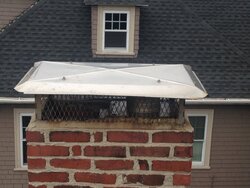
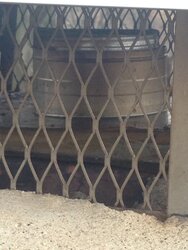
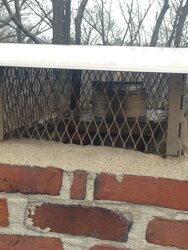
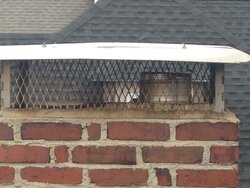
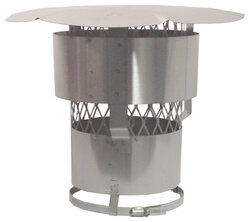







 Thoughts?
Thoughts?